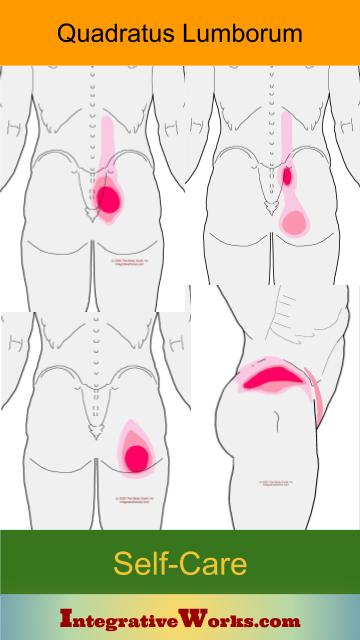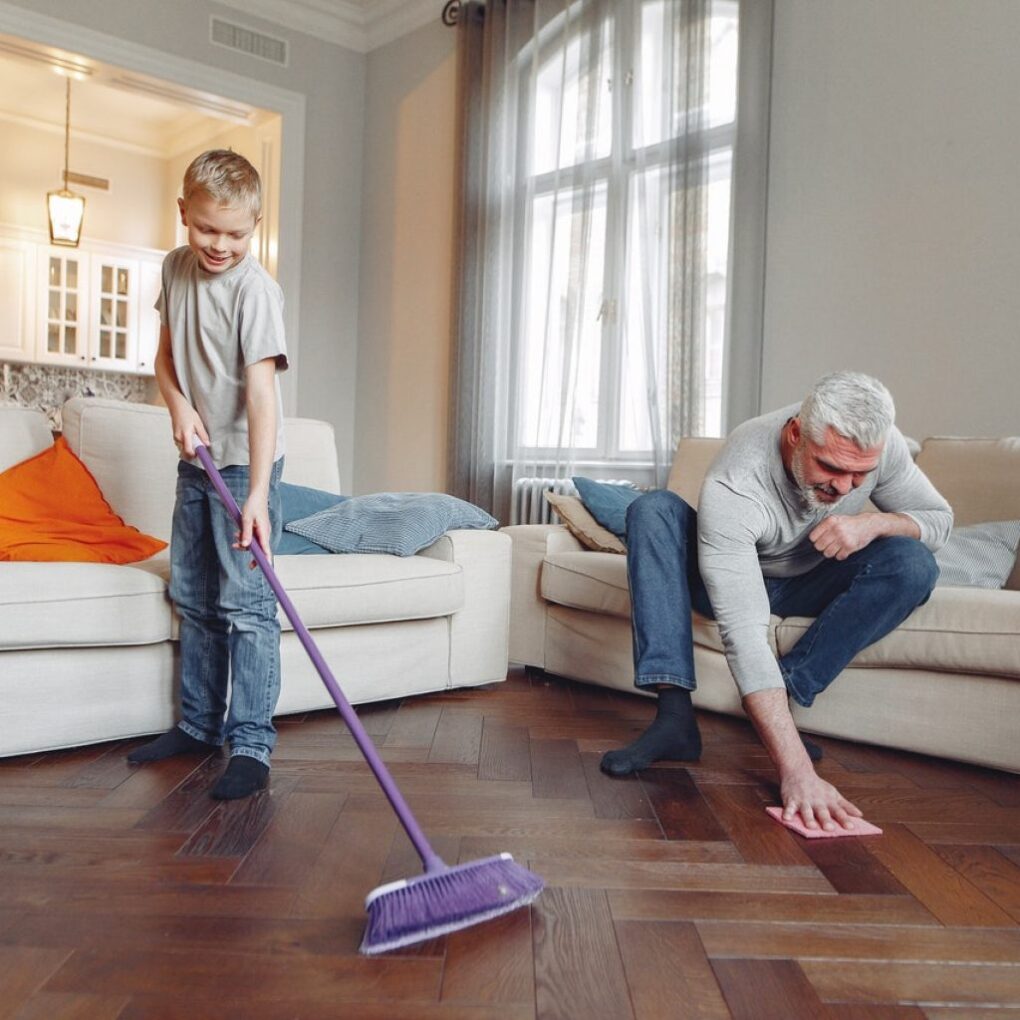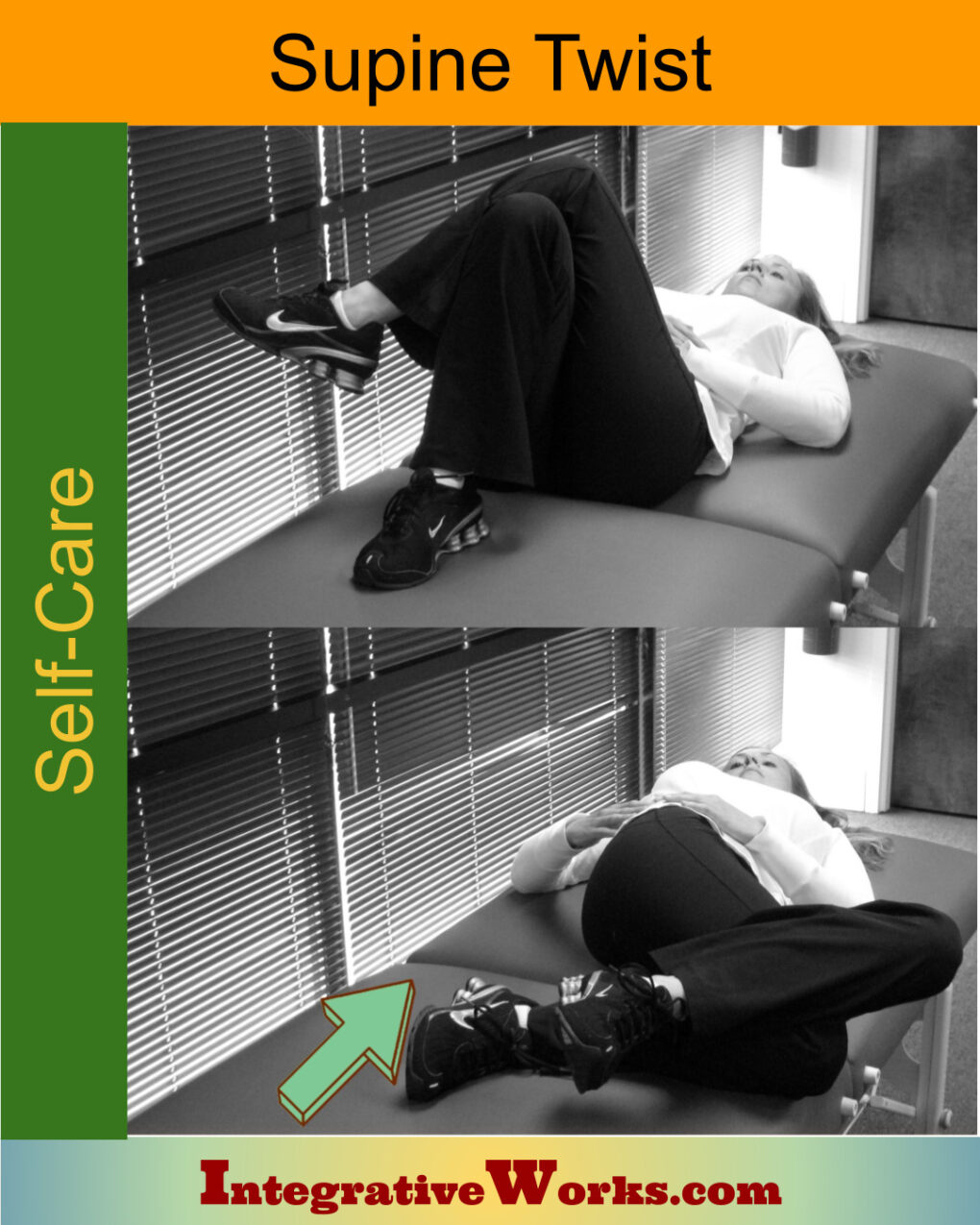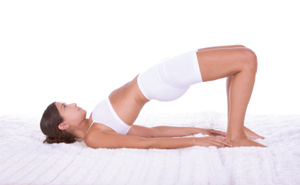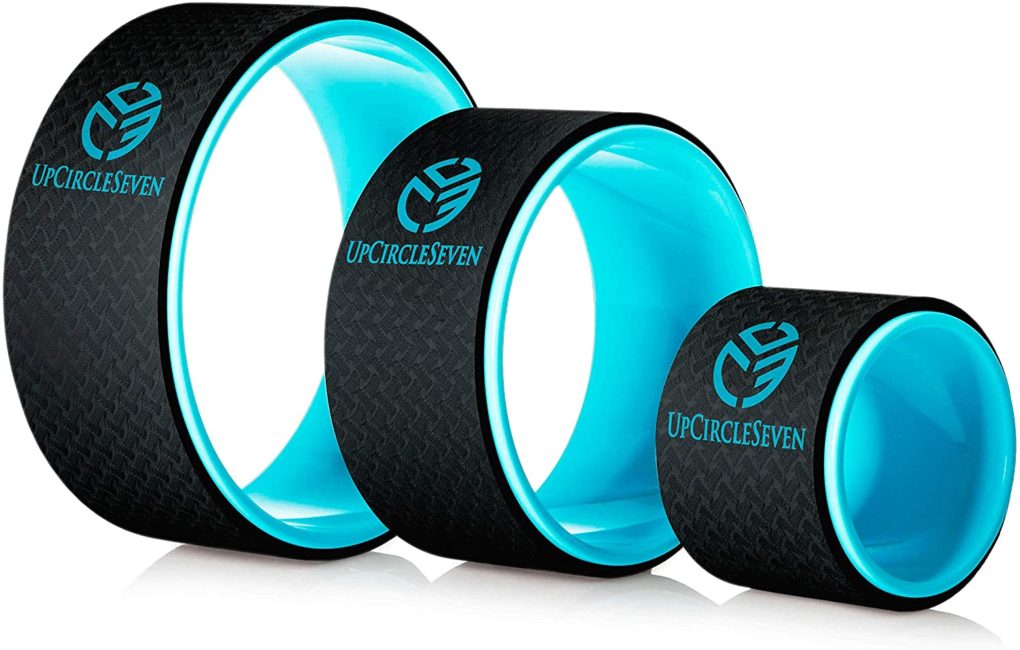Here you will find ways to get relief from pain created by the quadratus lumborum and multifidi. They work together to create several patterns, depending on the location of the trigger point. These patterns include pain along the crest of the hip, pain in the sacroiliac joint, and pain in the buttock.
Fragile, unstable low-back pain can be complicated and quite serious. If this problem is chronic or severe, seek help from a chiropractor, osteopath, orthopedist or other professional.
Activities To Avoid or Change:
Avoid heating pads with this trigger point.
It will feel good when applied.
However, it consistently feels worse after a few hours.
Also, the condition will worsen over time.
Teetering and Slumping
Avoid the teetering exercises listed in the post on this trigger point. This includes vacuuming, sweeping, raking, working on a low counter, or doing dishes. Also, avoid exercises where you bend forward, like moving boxes or picking up grandkids.
Cycling
Cycling usually aggravates the low-back as well. Instead, a recumbent cycle does not seem to bother the low-back and hips like traditional bicycles.
Unavoidable Chores?
Avoid the activities mentioned above until your back has strengthened and stabilized. If you can’t avoid them, wear an IcyHot patch. I’ve used them a great deal with my wife and friends when traveling, moving, or working in the yard.
For Temporary Relief:
For relief on the go
or getting out of bed.
These topical patches offer a lot of relief for the fragile low-back pain from the trigger point referral. In addition, they boost your energy during the day. Also, getting out of bed is much easier when you put one on before bed.
Put them where it is in this picture on the box. Feel for your ribs and hips in the back and center this patch in that area.
They are available. here on Amazon.
Stabilizing Relief
Icing helps to reduce pain and inflammation. The larger ice pack below is suitable for covering the area from the lower ribs and middle of the hips. In addition, icing will compress and stabilize the lumbar vertebrae.
Over the years, many clients used a heating pad in bed. It makes rising easier, but the condition continues to worsen as the days go on. Consistently, they improve when they stop using heat on their low-back. Contrast Therapy is the idea that you will mix ice and heat. It works if you end with an ice pack. You can read about it in this post on using an ice pack.
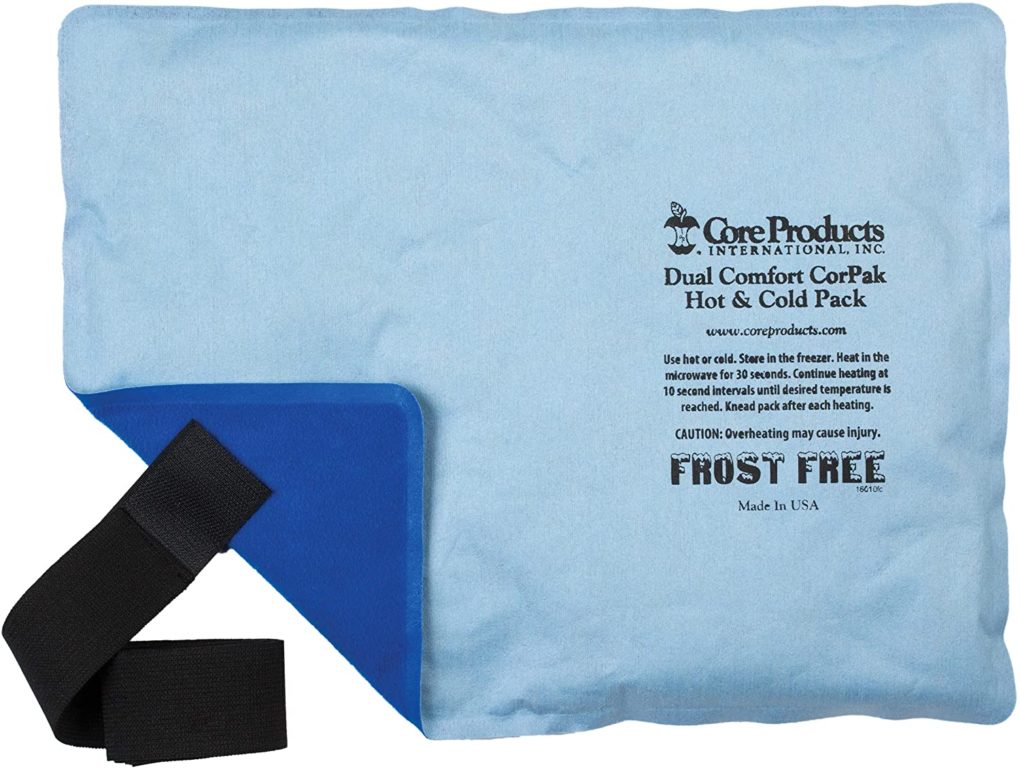
I like these 10×13 ice packs to focus the icing on the right area. They have a cloth covering to prevent frostbite when you’re in too much pain to find and position a thin cloth between the pack and your skin. Here is a post with guidelines on using an ice pack. These ice packs are available here on Amazon.
These self-care activities, like over-the-counter drugs, are not intended to replace appropriate medical attention. If you have concerns about these self-care activities, get help from a professional. Use these suggestions and strategies with discretion and at your own risk. See your doctor when your pain is severe, persistent, or not responding to these simple suggestions.
Stretches and Exercises for Longer-Lasting Relief:
The multifidi muscles of the low-back are key in stabilizing the quadratus lumborum. They atrophy significantly in the late 30s and early 40s as the sacroiliac joint is fusing. A common strategy is to loosen the vertebrae with the supine twist and then build balanced muscle with bridges and lunges.
Start with 4 sets of 10 twists on each side
with a set of 10 bridges in between.
Mobilize the Joints
These trigger points are perpetuated by problems in the lumbar facet joints. The supine twist is a classic approach to mobilizing those joints.
Align and build
This yoga pose is great for returning a proper curve to the low-back while balancing tension on the hip flexors and flattening the abdomen.
Even Better
To make it even better, use the method in Active Isolated Stretching. Do slow repetitions that you take to the point of slight tension and hold for 1.5 seconds. Pull your belly button in as you lift your hips. Then, drop your hips back to the mat before you do it again. Do 10 reps.
If you don’t know AIS, here is a post with a brief set of guidelines.
Once you become more stable, walking lunges are a great way to further balance and build the hip and low back. Walking lunges open the pelvis, regulate tension between the hamstrings and quads. They also build spinal erectors. It is important to avoid teetering or allowing the shoulders to lean out over the toe while lunging. Pain in the low back will remind you to stay upright. You may need a trainer or therapist to help with these.
For the Active Body
If you are stable enough to do walking lunges,
Five sets of 12 (6 on each leg) are a solid start.
Do the bridges in between. Use the AIS method.
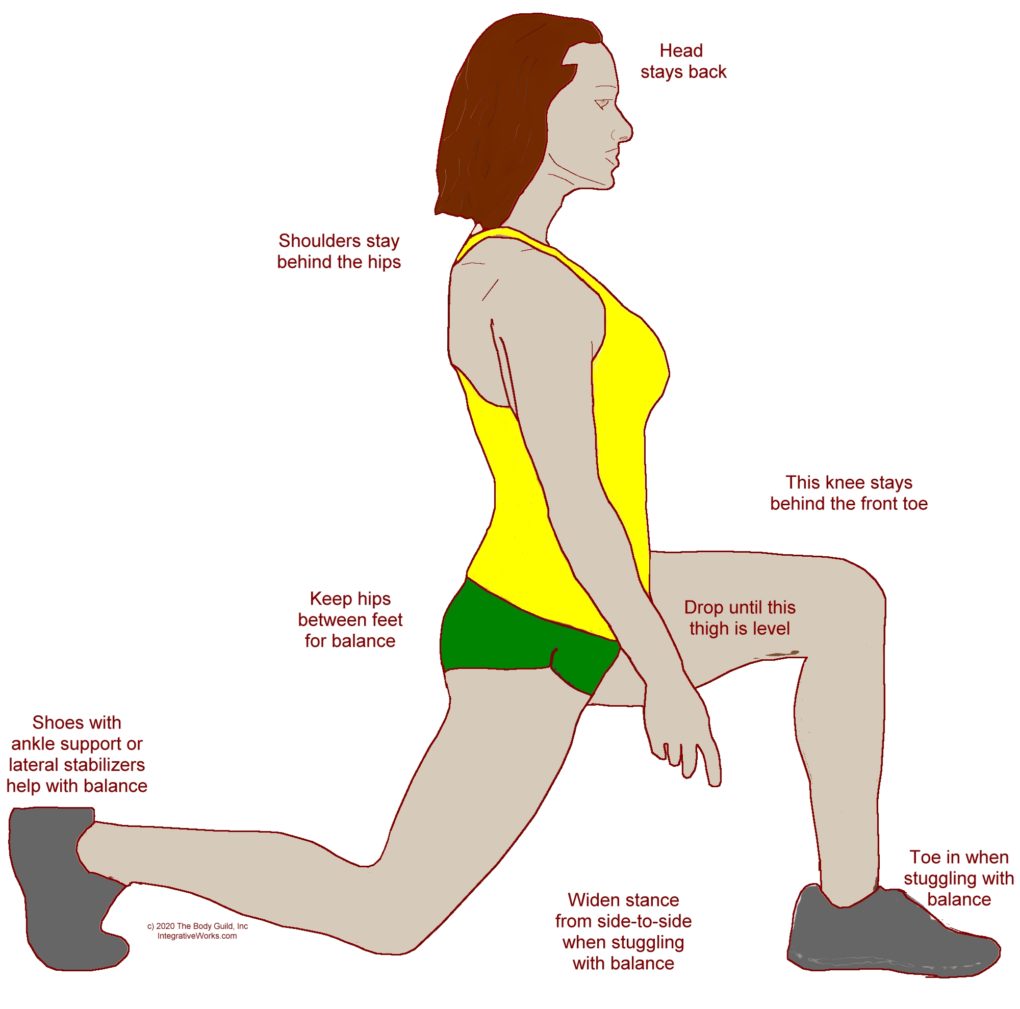
Walking Lunges
- Step forward so the front foot is in front of the knee and the back knee is behind your hips.
- Keep your shoulders back over your hips.
- Lower your torso until the front is level.
- Keep your knee behind your toes on the front leg.
- Widen your stance, turn your front toe in a tiny bit, and focus on keeping your hips between your feet if you are unstable.
- Step forward while minimizing how much your head and front shin lean forward.
- Do 6-10 reps on each leg.
A Great Tool
This three-pack of yoga wheels helps to mobilize and reshape your spine. I use a 3-pack like this regularly to loosen my back. I use them all but prefer the small wheel. It has more focused pressure.
My Experience
I have a set of three and have loaned them to a number of clients for a week. They almost always order a set for themselves. With regular use, I can see a real difference in the curve of their spine. They have played with different models and, in general, prefer the ones with deeper padding.
You can find yoga wheels on Amazon. This one has a great rating but you may want one that is a bit more narrow. Get the ones that work best for your body. I and most of my clients prefer the Chirp Wheel.
I’d love your feedback on how this works for you and any suggestions you might have.
Email me at integrativeworks@gmail.com.
Yoga Corner
Yoga Supine Twist
It often produces little clicks of mobilizing vertebrae that release the trigger points creating immediate relief. Play with the position of the upper leg to target the tight spots.
Professional Help
The low back can be complicated to rehabilitate. If you do not succeed with these simple suggestions, or the exercises don’t lead to quick improvement, see a bodyworker, orthopedist, or chiropractor for professional help.
I’d love your feedback on how this works for you and any suggestions you might have.
Email me at integrativeworks@gmail.com.
Yoga Corner
Support Integrative Works to
stay independent
and produce great content.
You can subscribe to our community on Patreon. You will get links to free content and access to exclusive content not seen on this site. In addition, we will be posting anatomy illustrations, treatment notes, and sections from our manuals not found on this site. Thank you so much for being so supportive.
Cranio Cradle Cup
This mug has classic, colorful illustrations of the craniosacral system and vault hold #3. It makes a great gift and conversation piece.
Tony Preston has a practice in Atlanta, Georgia, where he sees clients. He has written materials and instructed classes since the mid-90s. This includes anatomy, trigger points, cranial, and neuromuscular.
Question? Comment? Typo?
integrativeworks@gmail.com
Interested in a session with Tony?
Call 404-226-1363
Follow us on Instagram

*This site is undergoing significant changes. We are reformatting and expanding the posts to make them easier to read. The result will also be more accessible and include more patterns with better self-care. Meanwhile, there may be formatting, content presentation, and readability inconsistencies. Until we get older posts updated, please excuse our mess.
